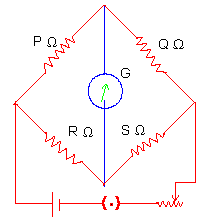|
Chapter 16 : Geometrical Optics
-
How would you distinguish a plane mirror, a concave mirror and a convex mirror without
touching them and just by looking at them?
-
Which mirror is used as rear view mirror in cars ? Explain.
-
Even before actual sun-rise sun's disc can be seen at dawn, and even after the actual sun-set the
disc can be seen at dusk. Explain.
-
A convex lens can behave optically as a diverging lens (concave lens) and a concave lens
can behave optically as a converging (convex) lens. State true or false; explain.
-
Can you determine refractive index of water by using a concave mirror being in contact with
horizontal surface on its opaque side ? Give the details of experimental set up and procedure to
be followed. Obtain expression for Refractive index of water.
Chapter
17 : Nature of Light
-
Explain in brief why Newton's corpuscular theory of light has been discarded.
-
Explain the constructions of Huygen's wave theory of light.
-
Light of wave length 6000 A0 (yellow color) enters water of R.I. 4/3 . Find its wave length in
water. What will appear to be the color of light in water ?
Chapter 18 : Physical Optics
-
Explain how wave theory of light can explain (a) interference of light (b) diffraction of light (c) polarization of light .
-
Is it possible to have a dark fringe at the center of interference pattern due to two
monochromatic sources ? If yes, explain how would you do this.
-
If a thick object is placed in the path of a light beam then only a dark shadow is seen on the
screen; but if a sufficiently thin object is placed then interference pattern is seen within the shadow. Explain.
Chapter 19 : Electrostatics
-
Is a dielectric medium always non-conducting ? Can it become a conducting medium, explain.
Name the natural phenomenon in which air becomes conducting medium.
-
It is safer to be inside a care than outside it when lightening bolts strike. Comment.
-
Show that the total electric flux over a closed surface due to charges outside of the surface is
always zero.
-
You are given three identical capacitors, each having same capacity. How many different
combinations can be formed ? In which case the effective capacity is the least, the greatest.
Ans : Four combinations : (i) all in series (ii) all in parallel (iii) Any two parallel and third in series
(iv) any two in series and third in parallel. Least capacity in (ii) and greatest capacity in (i).
Chapter 20 : Magnetism
-
Why is divergence of  always equal to zero ? always equal to zero ?
-
Define dipole moment of a bar magnet.
-
A bar magnet is laid with its  parallel to horizontal component parallel to horizontal component
 H of earths magnetic field. If neutral point is found at distance of 20 cm from the centre, and the bar magnet is short then find
its dipole moment. H of earths magnetic field. If neutral point is found at distance of 20 cm from the centre, and the bar magnet is short then find
its dipole moment. 
Ans : M = 3.2
Amp  m2 m2
Chapter 21 : Current Electricity
-
Explain the origin of electrical resistance of conductors in terms of atomic structure of matter.
-
Find the condition of balance of the net work (wheatstone's ) shown. Condition of balance
occurs when current through galvanometer G is zero.

Ans : Condition of Balance :

[next page]
|
Index
Questions
Bibilography
Chapter
1
|
